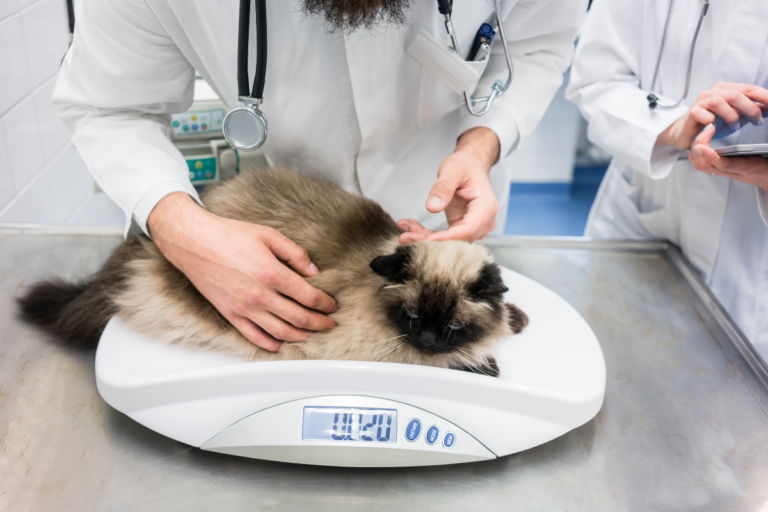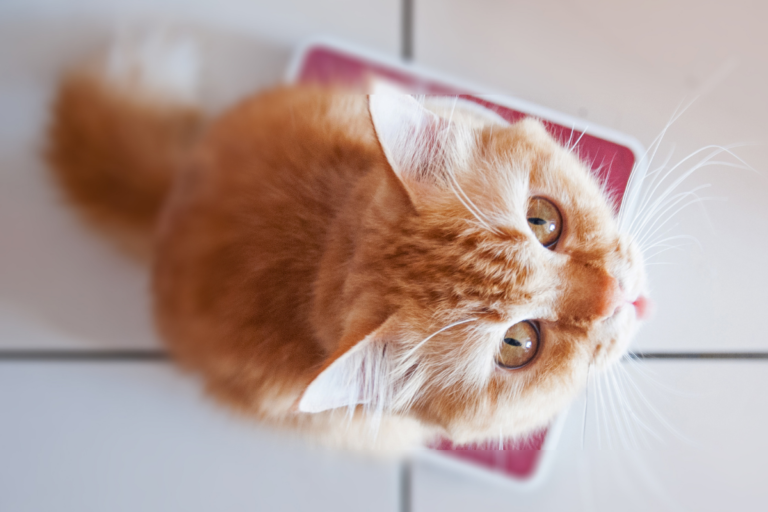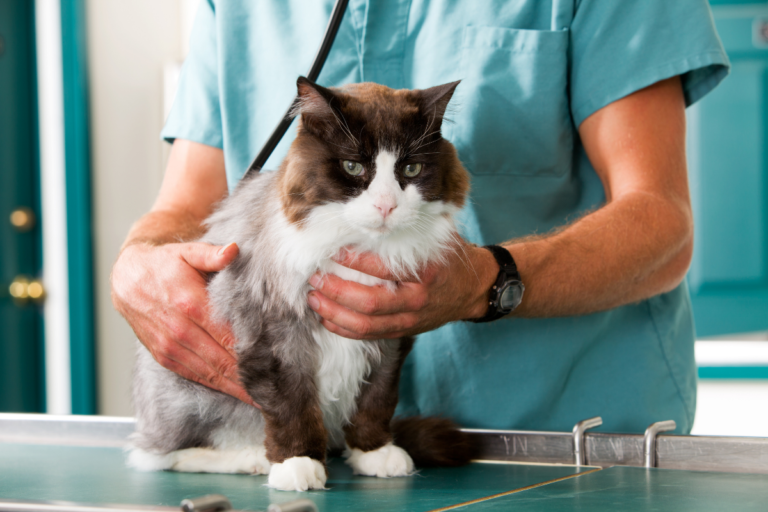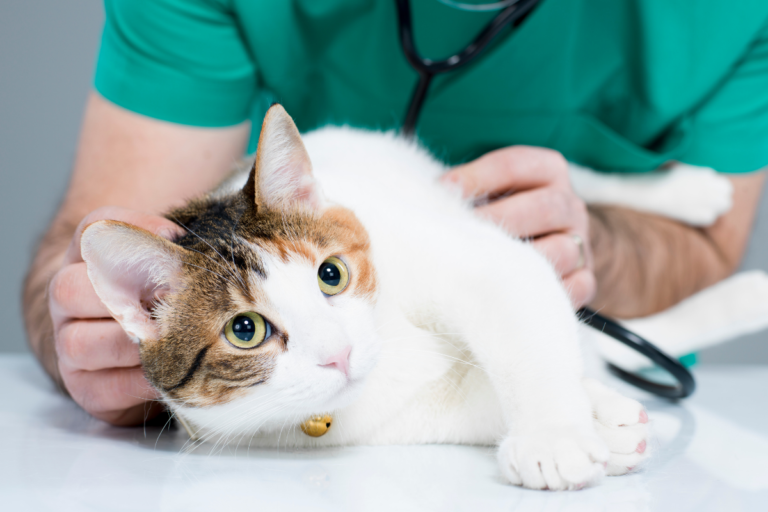Protecting Our Furry Friends: Recognizing Common Cat Illnesses
Cat Health Basics
Taking care of our kitty’s health is something we all care about a lot. Understanding cat wellness and the role of preventative care keeps them purring and healthy.
Understanding Feline Wellness
Cats are pretty amazing and can stick around for 15 to 20 years. As they get up in age, they might face health headaches like hyperthyroidism, which bothers about 10% of them old-timers (Pawlicy Advisor). Regular trips to the vet are a must to stay on top of their health game. Vets can give vaccines, clean their teeth, and offer other vital support to keep kitties in high spirits.
Beyond those vet visits, knowing when something’s brew’ing is key. Cats aren’t big on showing their pain, so we need to be observant. If mittens starts acting funny or seems off, it’s probably time for the vet (Hillcrest Animal Hospital). Early bird finds the, err, worm?—getting on issues early keeps ’em from becoming major concerns.
Preventative Care Importance
Keeping our cats tip-top involves proactive planning. Regular check-ups are like our secret weapon against stuff like feline kidney disease and other sneaky heart problems. Vaccines are their shield from catching icky stuff and spreading it to us or their animal buddies.
Another thing to keep our eyes peeled for is bugs—no one likes those unwanted guests! If you spot signs of cat fleas or worms, nip it in the bud with spot treatments. Toothaches can be tough, so regular brushing prevents gum disease and those pesky dental problems.
Our cats don’t need to roll out of bed for some cat yoga, but a healthy weight wards off things like diabetes—a dangerous duo nobody wants to face (cat diabetic). Those vet checks will help with weight management, too (healthy cat weight kg).
| Preventative Care Part | How Often | Why It’s Done |
|---|---|---|
| Vet Check | Yearly (twice for the elderly) | Catch health problems soon |
| Shots | Vet’s call | Guard against nasty diseases |
| Teeth Cleaning | Yearly | Sidestep gum booboos and tooth troubles |
| No Fleas, Please | Keep at it | Ward off fleas and worms |
| Weight Watch | Keep at it | Keep in the best shape ever |
By sticking to these care routines, our fuzzy buddies can enjoy long, happy lives playing with their favorite toys. Also, check out stuff on cat teeth and other health topics to keep your furball fit and fine!
Common Cat Illnesses
Let’s chat about our whiskered pals and the illnesses they might face. Keeping up with regular vet visits can help us stay on top of their health game (CDC).
Diseases in Older Cats
Aging cats might pick up a few health quirks as the years roll on. Our feline companions can stick around for 15 to 20 years, so understanding potential health hiccups is a good move.
| Common Illness | Prevalence in Older Cats | Symptoms | Internal Links |
|---|---|---|---|
| Hyperthyroidism | ~10% | Weight loss, munchies, restlessness | feline kidney disease symptoms |
| Kidney Disease | High | Thirsty kitty, frequent peeing, tiredness | feline kidney disease symptoms |
| Diabetes | Depends | Thirst explosion, weight drop, sluggishness | cat diabetic |
| Arthritis | Common | Limping, avoiding jumps | cat disease |
| Dental Disease | Super Common | Dragon breath, eating troubles, drooling | cats dental disease |
Our older kitties are pros at hiding when they’re not feeling the best, so it’s on us to keep an eye out for any behavioral quirks. Catching these things early can make a big difference in their purr-filled days (Hillcrest Animal Hospital).
Risks for Kittens
Our little fluff balls come with their own set of health puzzles. Their tiny bodies are still figuring things out, making them magnets for infections and other issues. Vets? Oh yeah, they’re the front line for our kittens’ growth and health.
| Common Illness | Symptoms | Protection Tips | Internal Links |
|---|---|---|---|
| Feline Distemper (Paw What?) | Barfing, runs, fever | Jab them, keep it clean | cat disease |
| Upper Respy Junk | Sneezing, snot, hacking | Keep ’em away from sick cats | cat disease |
| Worms | Weight shedding, diarrhea, belly bloat | Deworm on the regular | cats worms symptoms |
| Feline Calicivirus | Mouth sores, limping, hot to touch | Shots, isolate the sick | cat disease |
| Fleas | Itchy, bald spots, see-the-buggers | Flea battleground | cat fleas symptoms |
Getting those shots and keeping up with check-ups can fend off a heap of trouble. Spotting early signs and getting vet help pronto is key for keeping kittens bouncy and healthy. Swing by our pages on cat disease for the good stuff on keeping your fur baby fit.
Knowing what could ail our cats at different stages helps us keep them on the path to full-bellied naps and playful frolics. Cheers to healthy paws and happy hearts!
Environmental Factors and Cat Health
When it comes to keeping our fluffy companions healthy and happy, knowing how their surroundings affect them is a big deal. Let’s go through the common pitfalls lurking in our environment and peek into how genetic quirks play a role in our cat’s health.
Environmental Risks for Cats
Our mischievous little daredevils can bump into a bunch of hazards, both indoors and out. From accidentally munching on the wrong stuff to oopsie-daisy injuries, here’s what we gotta watch out for:
- Safe Outdoor Spots: Make sure any outdoor play areas are fenced off from dangerous stuff like toxic plants and sharp things. Keep it like a kitty-safe amusement park!
- Toxin Tales: Keep things like certain cleaning products and those sneaky lilies out of cat’s reach. You’d be surprised what they’ll try to chew!
- Shots & Jabs: Chat with your vet about any extra vaccinations that might be a good idea to dodge common nasties.
Need tips on dodging cat health landmines? Check out our pages on cat disease and feline kidney disease symptoms.
| Risk Type | What Might Happen |
|---|---|
| Accidental Poisoning | Nasty stuff like puking, diarrhea, seizures. Yikes! |
| Puncture Wounds | Think infections, or worse, yucky abscesses. |
| Pathogenic Infections | Trouble with breathing, tummy issues, the works. |
Genetic Disorders Impact
Now, onto the quirks! Cats come with their own set of surprise features—like a lovable toy you just bought. These are over 70 kinds of genetic quirks out there!
Some kitty breeds carry more genetic baggage than others. A few typical suspects:
- Polydactyl Cats: Extra toes galore! Cute, right? But keep those toenails trimmed to stop any issues.
- Purebred Beauties: Siamese, Persian, or Ragdoll, each has its own coconut-sized health surprises Pawlicy Advisor.
The more we know about these genetic hiccups, the more prepared we are for any hiccups. Regular vet trips mean earlier spotting of issues, making us cat-parent superheroes. For other tidbits, visit our pages on cat heart issues, cat liver problems, and cat eye problems.
By figuring out these environmental and genetic puzzle pieces, we can give our purr-machines the best life possible. For more on preventing kitty drama and how the vet helps, pop by cat health basics and importance of veterinary care.
Importance of Veterinary Care
We’re all about keeping our kitty pals spry and happy, right? Vets are like the superhero sidekicks of the animal world. Getting what they do can really help us make sure our cats live their best lives.
Veterinarians’ Role
Vets are the go-to folks for keeping all critters, especially our feline friends, in tip-top shape. They handle everything from check-ups, shots, dental TLC, to the whole kit and caboodle of preventive care to help our pets live their best nine lives. The AVMA even says vets pitch in for things like protecting the environment, research, and public health. Now, that’s a full plate!
A big part of a vet’s day job involves spotting stuff early on, like feline kidney disease symptoms, cat gum disease, and cat eye problems. When they catch things early, it means they can help manage these conditions before they morph into something bigger.
Moreover, a bunch of veterinarians work as disease detectives—they keep an eye on outbreaks affecting both critters and humans, tackling things like food-related sicknesses and rabies (AVMA). With more than a hundred vets on the CDC’s team, they’re the folks to thank for getting in front of diseases, cooking up prevention plans, and backing public health efforts.
Immediate Medical Attention
We all know gut feeling is a thing, right? Knowing the warning signs in our cats can save loads of headache—and heartache. If you see any weird changes in your cat’s behavior, eating habits, or how spruced-up they’re looking, that’s your cue to take action. Things like cats with worms, cat liver troubles, and heart glitches (heart issues in cats)—catching these early can stop more drama down the line.
Veterinarians are the cavalry when it comes to quick-response care for things like injuries, poisons, or out-of-the-blue sickness. They’ve got the know-how and gizmos to tackle emergencies, making sure your furry friend gets primo care even in the stickiest situations.
| Common Cat Illnesses | Symptoms Needing Fast Attention |
|---|---|
| Cat Diabetes | Drinking like a fish, bathroom breaks galore, shedding pounds |
| Feline Kidney Disease | Puking, zapped energy, skipping meals |
| Cat Liver Problems | Yellow tinge, throwing up, losing weight |
| Heart Issues in Cats | Hacking cough, gasping for breath, passing out |
Emergencies can be downright scary. Having a vet clinic’s number on speed dial can be a game-changer. And hey, vets are also there to steer us on what’s preventive—like vaccines, plus tips on diet and exercise so our cats don’t have to watch their waistlines. They’ve got loads to share about keeping an eye on health quirks so our buddies stay purring along happily. If you’re curious about staying on top of health care, check out our piece on preventative care importance.
Recognizing Signs of Illness
Cats are sneaky little ninjas when it comes to disguising illness. That’s why it’s up to us to stay on top of any oddball behaviors and funky smells. A quick catch can mean a big difference, and a quick trip to the vet can save us a whole lot of heartache (and potentially heartache-inducing vet bills).
Behavioral Changes
Behavioral quirks Often carry more hints than a game of charades. Peek at these changes to catch what might be up with our feline pals:
- Energy Levels: If your bouncing fluff ball suddenly becomes a couch potato, or the opposite happens with your lazy snoozer turning into a parkour pro, there might be a health snafu afoot.
- Sociability: A social butterfly that starts hiding in the laundry basket or the distant diva who won’t leave your side might be trying to communicate something’s awry.
- Appetite: If your cat suddenly starts boycotting her kibble or demands an all-you-can-eat buffet, diabetes or tummy troubles might be knocking at the door (ASPCA).
- Litter Box Shenanigans: Pop quizzes on where to pee and poo can lead to clues about urinary or kidney mishaps. When your cat turns the house into a map of their restroom routines, listen up!
Need to dig into specifics? Check out links on cats worms symptoms, feline kidney disease symptoms, and cat diabetic.
Physical Indicators
Let’s get physical! Keep an eye out for these telltale signals that may indicate your cat is under the weather:
- Coat Condition: If your kitty’s beauty parlor session seems long overdue, with fur looking dull or shedding by the truckload, it might be skin problems or a hint they’re not feeling too hot (Hillcrest Animal Hospital).
- Breathing Issues: Breathing like they just ran a marathon isn’t normal post-nap behavior. This can point to lung troubles or heart hiccups. Also, see cats heart and heart issues in cats.
- Eye or Nose Drip: Snotty nose or watery eyes isn’t just a bad look – it could be a red flag for infections or allergies. Explore more at cat eye problems.
- Mouth Stuff: If your cat’s breath smells like something crawled in and died, or if they’re drooling like a puppy in a butcher shop, dental issues might need some attention. Check out cat dental disease and cat gum disease.
- Fluctuating Weight: Whether beefing up or slimming down, a sudden weight change can scream health issues like cancer, nutritional bloopers, or other serious concerns like diabetes. More info on overweight cat, senior cat weight loss, and healthy cat weight kg.
| Symptom | Potential Health Issue |
|---|---|
| Weight Loss | Cancer, kidney problems, diabetes |
| Change in Appetite | Diabetes, gastrointestinal disorders |
| Labored Breathing | Lung infections, cardiac conditions |
| Lethargy | Infections, chronic diseases |
| Eye/Nose Drip | Respiratory infections, allergies |
Looking for emergency signs needing a vet’s immediate action? Jump to cat disease.
Keeping our whiskered friends under our watchful eye when they throw us these cues can keep them happy and healthy, just the way they deserve!
Purebred Cat Health Concerns
Cats come in all shapes and sizes, with our purebred pals sometimes carrying special health baggage specific to their stamp. Let’s roll up our sleeves and peek into these breed-specific issues and some general health hiccups our feline buddies might face.
Breed-specific Disorders
Some purebred cats are ticking with genetic quirks. Knowing these can help us give back the love and care our whiskered buddies deserve.
Bengal Kitties
Bengals, with their eye-catching coats, bring a few glitches too. Watch out for:
- Cataracts
- Progressive Retinal Atrophy (PRA)
- Hypertrophic Cardiomyopathy (HCM)
HCM, a bit of a show-stopper, might bring signs like sluggishness, breathing woes, and heart beat blips.
Siamese Beauties
The affectionate Siamese might charm you with their chat, but they’re packed with risks like:
- Mediastinal lymphoma
- Intestinal adenocarcinomas
- Progressive Retinal Atrophy (PRA)
- Asthma
- Hip dysplasia
- Arthritis
- Pica
Keeping a keen eye out for these, and buzzing the vet when trouble shows, is a must (Kinship).
Ragdoll Charmers
Ragdolls might melt your heart with their sweet nature, but they could trip up with:
- Hypertrophic Cardiomyopathy (HCM)
- Polycystic Kidney Disease (PKD)
- Obesity
- Blood clots
- Cryptococcosis
Routine vet jaunts are your sidekick in managing these bumps on the road (Kinship).
Common Health Issues
Whether purebred or alley cat, some health twists weave more into certain breeds. Being savvy can help us dodge and catch these gremlins early.
| Cat Breed | Health Issues |
|---|---|
| Siamese | Cancer, Asthma, Pica |
| Bengal | Cataracts, PRA, HCM |
| Ragdoll | HCM, PKD, Obesity |
We should also stay sharp about basics like cat teeth niggles, keeping those tummies in check (healthy cat weight), and kidney blahs (feline kidney disease symptoms). Vet check-ups and eyeing up common cat illnesses help keep our kiddos in fine fettle.
For a heads-up on symptoms and stopping troubles before they start, have a look at cat gum disease, cat eye problems, and cat fleas symptoms. Knowing the drill makes a big difference, keeping our furry besties bounding with health and happiness.






